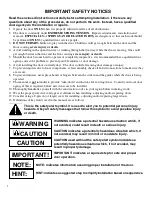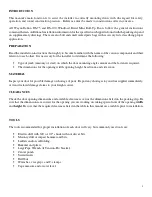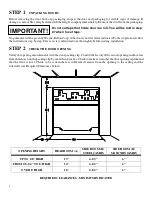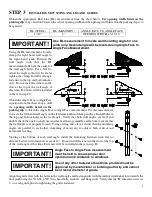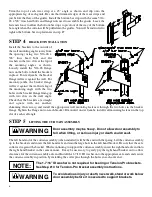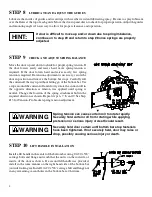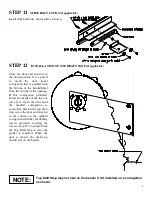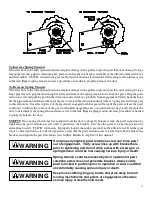
3
INTRODUCTION
This manual's main function is to assist the installer in correctly mounting doors with due regard for safety,
operation, and sound construction practices. Reference must be made to construction codes in your area.
All Wayne-Dalton DS-75 and DS-100 Windload Rated Mini Roll-Up Doors follow the general instructions
contained herein. Additional installation information for the specific door shipped is found with the packing slip and
on supplementary drawings. There are also bolt and small sealed parts bags with accessory lists, describing proper
application.
PREPARATION
Read the installation instructions thoroughly to become familiar with the names of the various components and their
relation to each other. It is necessary for the installer to determine the following:
Type of jamb (masonry or steel) on which the door mounting angles mount and the fasteners required.
The dimensions for the opening width, opening height, headroom, and side room.
MATERIAL
Inspect your door for possible damage or shortage of parts. Report any shortages to your door supplier immediately,
or transit related damage claims to your freight carrier.
CLEARANCES
Check the door opening dimensions and available clearances versus the dimensions listed on the packing slip. Be
sure that the dimensions are correct for the opening you are working on, taking special note of the opening
width
and
height
. Be sure that the required clearances listed in the table in this manual are available prior to installation.
TOOLS
The tools recommended for proper installation of each door will vary, but commonly used tools are:
Electric drill with 3/8" or 1/2" chuck with nut driver bits.
Masonry drill or impact hammer and bits.
Ladders and/or scaffolding.
Hammer and pliers.
Large Pipe Wrench (if Tension-Pro bracket).
Center punch.
Screwdrivers.
Drill bits.
Wrenches, vise grips, and C-clamps.
Tape measure and a water level.


